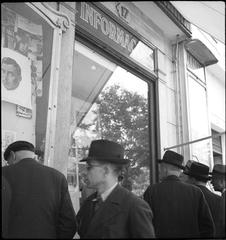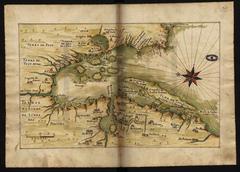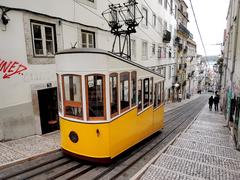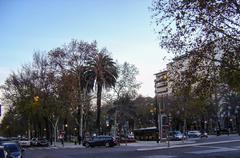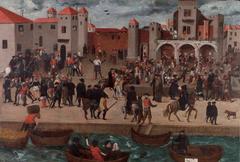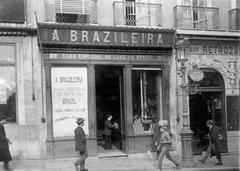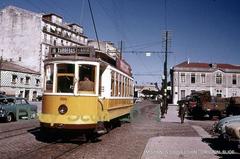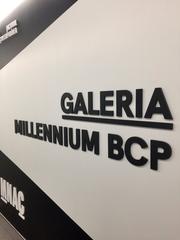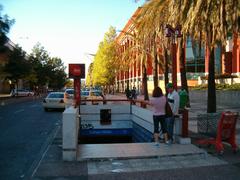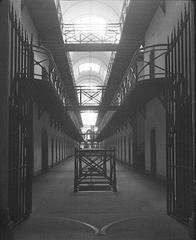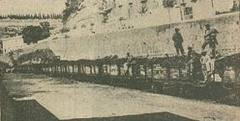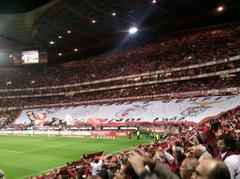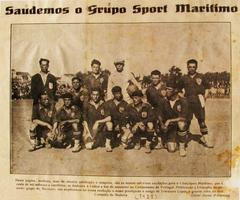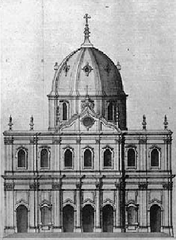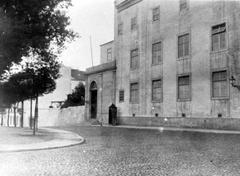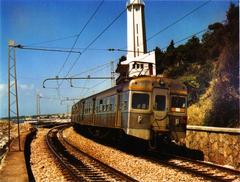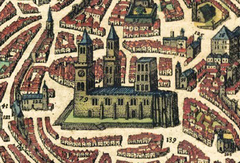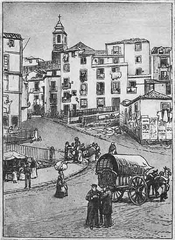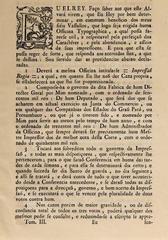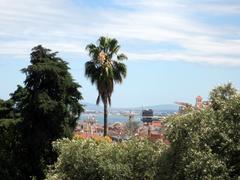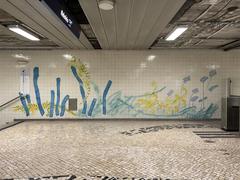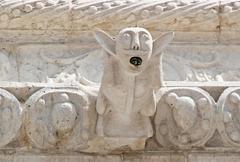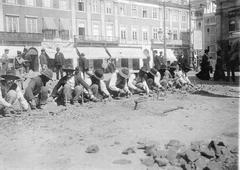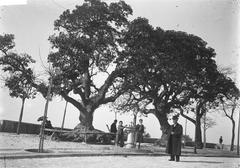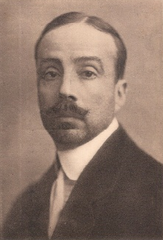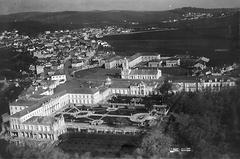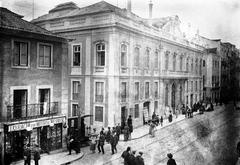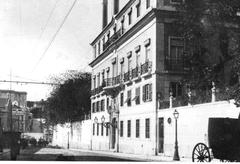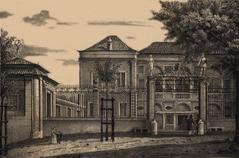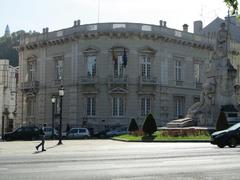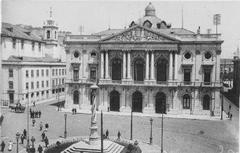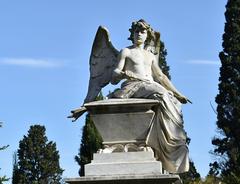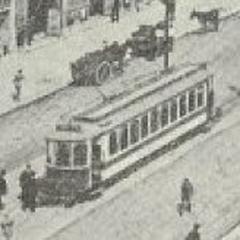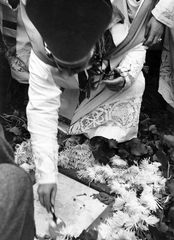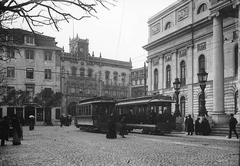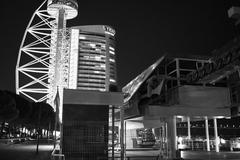
Praça Da Figueira Visiting Guide: Hours, Tickets, and Nearby Historical Sites
Date: 16/08/2024
Introduction
Praça da Figueira, translating to ‘Square of the Fig Tree,’ is a prominent and historically rich square located in the heart of Lisbon, Portugal. This iconic landmark has seen significant transformations over the centuries, evolving from the site of the All-Saints Royal Hospital in the 16th century to a bustling market square and now a vibrant cultural and commercial hub. The square’s historical resilience, marked by the rebuilding efforts after the catastrophic earthquake of 1755, showcases Lisbon’s adaptability and enduring spirit (Wikipedia). The addition of the bronze equestrian statue of King John I in 1971 further underscores its historical importance (Wikipedia). Today, Praça da Figueira stands as a central point for locals and tourists alike, offering a unique blend of history, culture, and modern-day conveniences. This guide will delve into the square’s rich past, provide practical visitor information, and offer travel tips to make the most of your visit to this essential Lisbon landmark.
Table of Contents
- Introduction
- Historical Background
- Visitor Information
- Travel Tips and Nearby Attractions
- FAQ
- Conclusion
- Call to Action
Historical Background
Origins and Early History
The area where Praça da Figueira now stands has a rich history dating back to the 16th century. Initially, this location was not a square but was occupied by the Hospital Real de Todos os Santos (All-Saints Royal Hospital), which was the most significant hospital in Lisbon at the time. The hospital was a critical institution for the city, providing medical care and services to the population (Wikipedia).
The 1755 Lisbon Earthquake
The landscape of Lisbon, including the area of Praça da Figueira, was dramatically altered by the catastrophic earthquake of 1755. This earthquake, followed by a tsunami and fires, devastated much of the city, including the Hospital Real de Todos os Santos. The hospital was severely damaged and subsequently demolished around 1775 (Wikipedia).
Transformation into a Market Square
Following the demolition of the hospital, the large open space left behind was repurposed into a market square. This transformation was part of the broader reurbanization efforts in Lisbon’s Baixa district, led by the Marquis of Pombal. The square became a bustling hub for commerce, reflecting the city’s recovery and resilience after the earthquake. By 1885, a large covered market, spanning 8,000 square meters, was constructed to shelter traders and their goods from the elements. This market thrived until 1949, when it was demolished, leaving the square as an open space once again (LisbonLisboaPortugal.com).
The Bronze Equestrian Statue of King John I
In 1971, a significant addition was made to Praça da Figueira with the inauguration of a bronze equestrian statue of King John I (1357–1433). This statue, created by sculptor Leopoldo de Almeida, commemorates the king who played a pivotal role in Portuguese history. The monument also features medallions with the effigies of Nuno Álvares Pereira and João das Regras, two key figures in the 1385 Revolution that brought King John I to power (Wikipedia).
Renovations and Modern Developments
The most recent significant renovation of Praça da Figueira took place in 1999/2000. During this renovation, the statue of King John I was relocated from the center of the square to a corner, enhancing its visibility from the nearby Praça do Comércio. The renovation project also proposed covering the surrounding buildings with ceramic tiles (azulejos) designed by Daciano Costa, although this aspect of the project was not realized (Wikipedia).
Architectural and Urban Significance
Praça da Figueira is characterized by its uniform architectural profile, with four-storey buildings that date back to the rebuilding of the Baixa Pombalina. These buildings now house hotels, cafés, and various shops, contributing to the square’s vibrant atmosphere. The square also serves as a crucial traffic hub, with numerous bus and metro stops, making it a central point for both locals and tourists navigating the city (LisbonLisboaPortugal.com).
Cultural and Social Hub
Over the years, Praça da Figueira has evolved into more than just a historical site; it has become a cultural and social hub. The square is a popular meeting place for many of Portugal’s ex-colonial residents, who gather outside the metro station entrance, engaging in conversations in various languages and dialects. This multicultural aspect adds to the square’s unique charm and significance within Lisbon (LisbonLisboaPortugal.com).
Economic and Commercial Role
The economic role of Praça da Figueira has also been noteworthy. The cafés and shops around the square cater to both locals and tourists, offering a range of products and services. Interestingly, the prices and quality of offerings in Praça da Figueira are often considered better than those in other squares of the Baixa district, although the standard of service can be unpredictable. This economic activity contributes to the square’s bustling and dynamic environment (LisbonLisboaPortugal.com).
Modern-Day Relevance
Today, Praça da Figueira remains an integral part of Lisbon’s urban landscape. It is frequently visited by tourists, not only for its historical significance but also because it serves as a major transport hub. All major bus routes pass through the square, tram routes popular with tourists start here, and there is a significant exit to the Rossio metro station. Even open-air tour buses begin their routes from this square, making it a starting point for many exploring the city (LisbonLisboaPortugal.com).
Visitor Information
Visiting Hours and Tickets
Praça da Figueira is an open public square and can be visited at any time of the day or night. There are no entry fees or tickets required to access the square itself. However, if you wish to join guided tours or visit nearby attractions, you may need to check their specific visiting hours and ticket prices.
Accessibility
The square is easily accessible and well-connected by public transport. It is pedestrian-friendly with ample space for movement. There are multiple bus stops and a metro station (Rossio) nearby, making it convenient for visitors with different mobility needs.
Travel Tips and Nearby Attractions
Travel Tips
- Best Time to Visit: The best time to visit Praça da Figueira is during the spring and autumn months when the weather is pleasant. Early mornings or late afternoons are ideal for avoiding crowds and enjoying a leisurely stroll.
- Local Cuisine: Don’t miss the opportunity to try traditional Portuguese pastries, such as pastéis de nata, at one of the local cafes. The nearby Confeitaria Nacional is a historic bakery known for its delicious treats.
- Safety: While the square is generally safe, it’s always wise to be mindful of your belongings, especially in crowded areas.
Nearby Attractions
- Rossio Square: Just a short walk away, Rossio Square is one of Lisbon’s most famous squares, known for its beautiful wave-patterned pavement and historic buildings. The Teatro Nacional Dona Maria II is a notable landmark here.
- Santa Justa Lift: This iconic elevator offers stunning views of Lisbon and connects the lower streets of Baixa with the higher Largo do Carmo.
- Castelo de São Jorge: A historic castle offering panoramic views of Lisbon, located a short distance from the square.
- Chiado: A vibrant neighborhood known for its shopping, theaters, and historic cafes.
FAQ
What are the visiting hours for Praça da Figueira? Praça da Figueira is open 24/7 as it is a public square.
How do I get to Praça da Figueira? You can reach Praça da Figueira by numerous bus routes, the Rossio metro station, and tram routes that pass through or start from the square.
Is there an entry fee for Praça da Figueira? No, there is no entry fee to visit the square itself.
Are there guided tours available? Yes, several guided walking tours include Praça da Figueira as part of their itinerary. Check with local tour providers for more details.
What is the best photographic spot in Praça da Figueira? The best spot for photography is near the statue of King João I, which offers a great view of the square and its surroundings.
Conclusion
The historical background of Praça da Figueira is a testament to Lisbon’s resilience and adaptability. From its origins as the site of the All-Saints Royal Hospital to its transformation into a bustling market square and its current status as a cultural and commercial hub, Praça da Figueira encapsulates the rich and dynamic history of Lisbon. The square’s evolution over the centuries reflects broader historical and social changes in the city, making it a must-visit location for anyone interested in understanding Lisbon’s past and present. Make sure to explore this vibrant square during your visit to Lisbon and immerse yourself in its unique blend of history and modern-day relevance.
Call to Action
For more travel tips and historical insights, follow us on social media and check out our other related posts. Don’t forget to download our mobile app Audiala for a more interactive exploration of Lisbon’s historical sites.
References
- Wikipedia contributors. (n.d.). Praça da Figueira. Wikipedia, The Free Encyclopedia. source
- LisbonLisboaPortugal.com. (n.d.). Praça de Figueira Lisbon. Lisbon Lisboa Portugal. source
- Lisbon Portugal Tourism. (n.d.). Praça da Figueira Square. Lisbon Portugal Tourism. source
- Travellers Worldwide. (n.d.). Best Time to Visit Portugal. Travellers Worldwide. source
- Mad About Lisbon. (n.d.). Praça Da Figueira. Mad About Lisbon. source
- Lonely Planet. (n.d.). Praça Da Figueira. Lonely Planet. source
